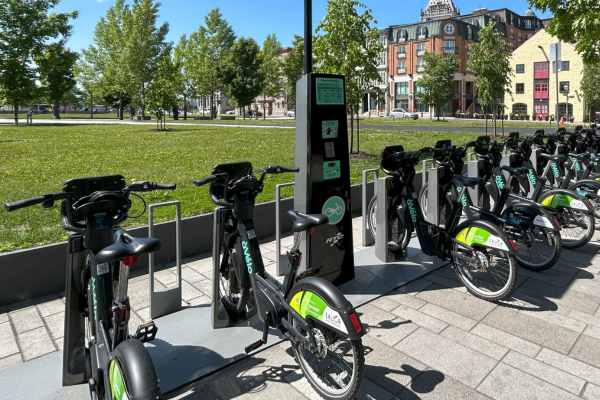



Micromobility has established itself as a transformative force in urban transportation across North America, offering sustainable and efficient solutions for short-distance travel. Two recent reports, one from the North American Bikeshare and Scootershare Association (NABSA) and the other from the National Association of City Transportation Officials (NACTO), provide an in-depth analysis of the micromobility landscape in 2023. These reports highlight record-breaking ridership, the rise of e-bikes, the expansion of services to more cities, and the challenges facing this dynamic sector.
2023 was a banner year for shared micromobility in North America. According to NACTO’s report, “Shared Micromobility in the U.S. and Canada: 2023,” riders took 157 million trips, a 20% increase from 2022. This marks the highest number of trips ever recorded, surpassing the previous peak of 147 million in 2019. The U.S. saw 133 million of these trips, while Canada contributed 24 million, representing a 40% year-over-year increase in Canadian ridership.
NABSA’s “2023 State of the Industry Report”(which also includes Mexico) adds another layer to this growth narrative, noting a significant expansion in the number of cities offering shared micromobility services. As of 2023, 421 cities across North America (371 cities in the United States, 41 cities in Canada and 9 cities in Mexico) now have bike share or scooter share programs, up 5% from 2022. This expansion reflects the growing demand for these services and their increasing integration into urban transportation networks.
The reports highlight a notable shift in the types of vehicles being used. NABSA’s data shows that e-bikes have become a dominant force in the micromobility market. In 2023, 64% of all shared bike trips in the U.S. were made on e-bikes, a significant jump from previous years. E-bikes are particularly popular in large cities like New York, Washington D.C., and Los Angeles, where they often outpace traditional pedal bikes in usage.
NACTO also underscores the resurgence of e-scooters after a slight dip in 2022. In 2023, e-scooter trips reached 69 million, a 15% increase from the previous year. Canadian cities played a crucial role in this recovery, with e-scooter trips doubling from 2 million in 2022 to 4 million in 2023.
NABSA’s report details the variety of vehicles available in the shared micromobility space. In addition to traditional pedal bikes and e-bikes, the market includes e-scooters, adaptive bikes, and other innovative modes of transport. In 2023, the number of e-bikes available in shared fleets grew by 30%, while the number of e-scooters saw a similar increase. Adaptive bikes, which cater to riders with disabilities, have also become more prevalent, reflecting an industry-wide push towards inclusivity.
The availability of diverse vehicle types has had a direct impact on ridership. E-bikes, for instance, are not only more popular but are also associated with longer trips, as they allow riders to travel further with less physical effort. This has made e-bikes a preferred option for many users, particularly in cities with challenging topography or longer distances between destinations.
Despite these positive trends, both reports emphasize the challenges that lie ahead. NACTO notes that many cities are struggling with limited financial and operational resources, which could hinder the long-term sustainability of shared micromobility programs. The rising cost of maintaining and operating these services, especially e-bikes, poses a risk to their affordability and accessibility. For instance, the cost of an annual bike share pass in Boston has increased by 30%, making it more expensive than other public transit options.
NABSA echoes these concerns, stressing the importance of equitable access and the need for cities to develop policies that ensure shared micromobility services remain affordable. The report calls for stronger collaboration between cities and operators to address these financial challenges while continuing to expand service offerings and improve infrastructure.
As micromobility continues to grow, its future will depend on how well cities and operators can navigate these challenges. The strong demand for shared micromobility services, evidenced by record ridership and the expansion to more than 400 cities, suggests a bright future. However, maintaining this growth will require strategic investments in infrastructure, supportive policies, and innovative operational models that can adapt to financial pressures.
The NABSA and NACTO reports offer a roadmap for the future, emphasizing the need for durability, equity, and sustainability in the micromobility sector. With the right support, micromobility can continue to transform urban transportation in North America, providing a greener, more efficient alternative to car travel.
For a more detailed exploration of the data and findings from these reports, you can download the full documents from the respective organizations:
– NACTO’s “Shared Micromobility in the U.S. and Canada: 2023“.
– NABSA’s “2023 State of the Industry Report“.
These comprehensive reports provide valuable insights for anyone interested in the evolving landscape of micromobility in North America.